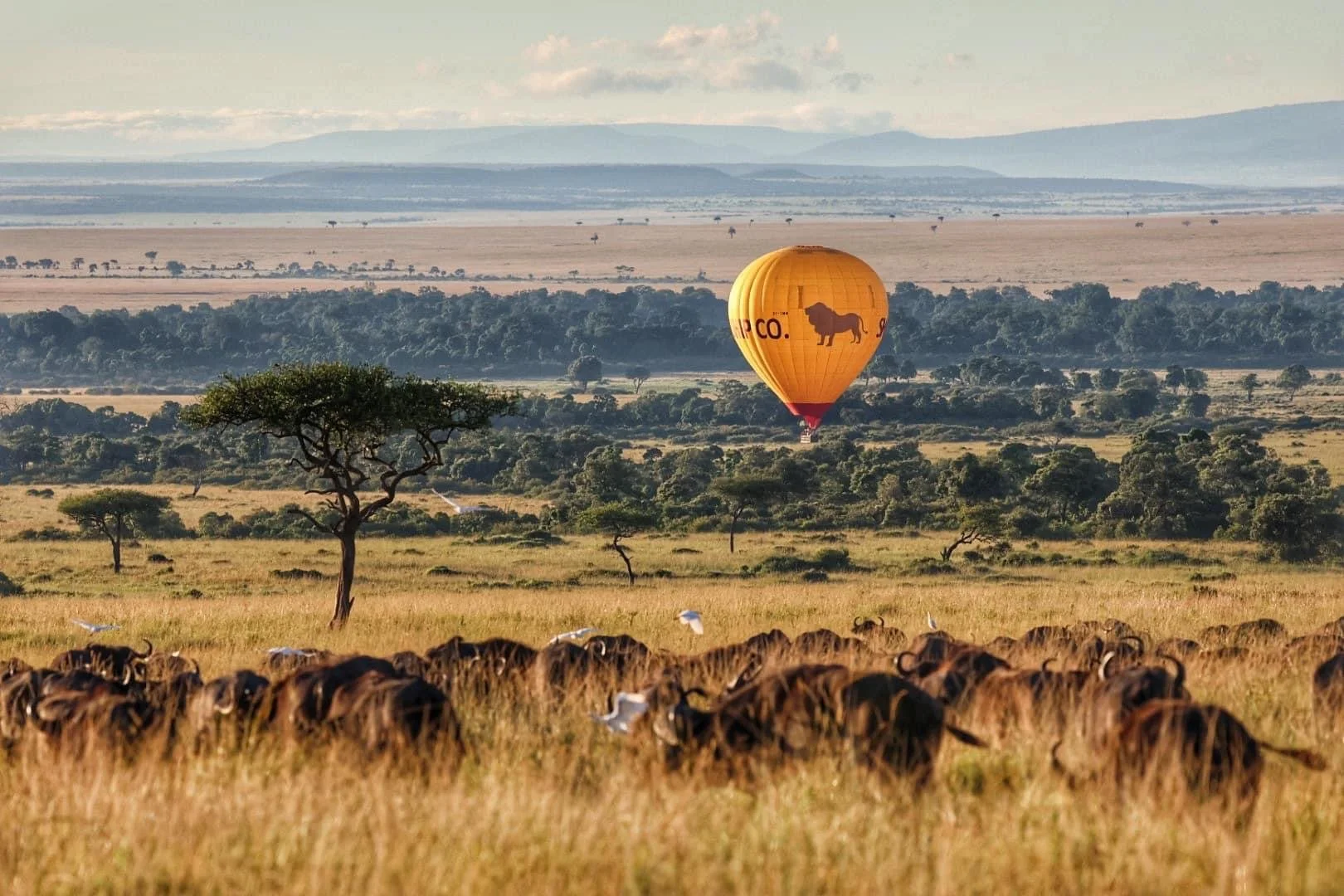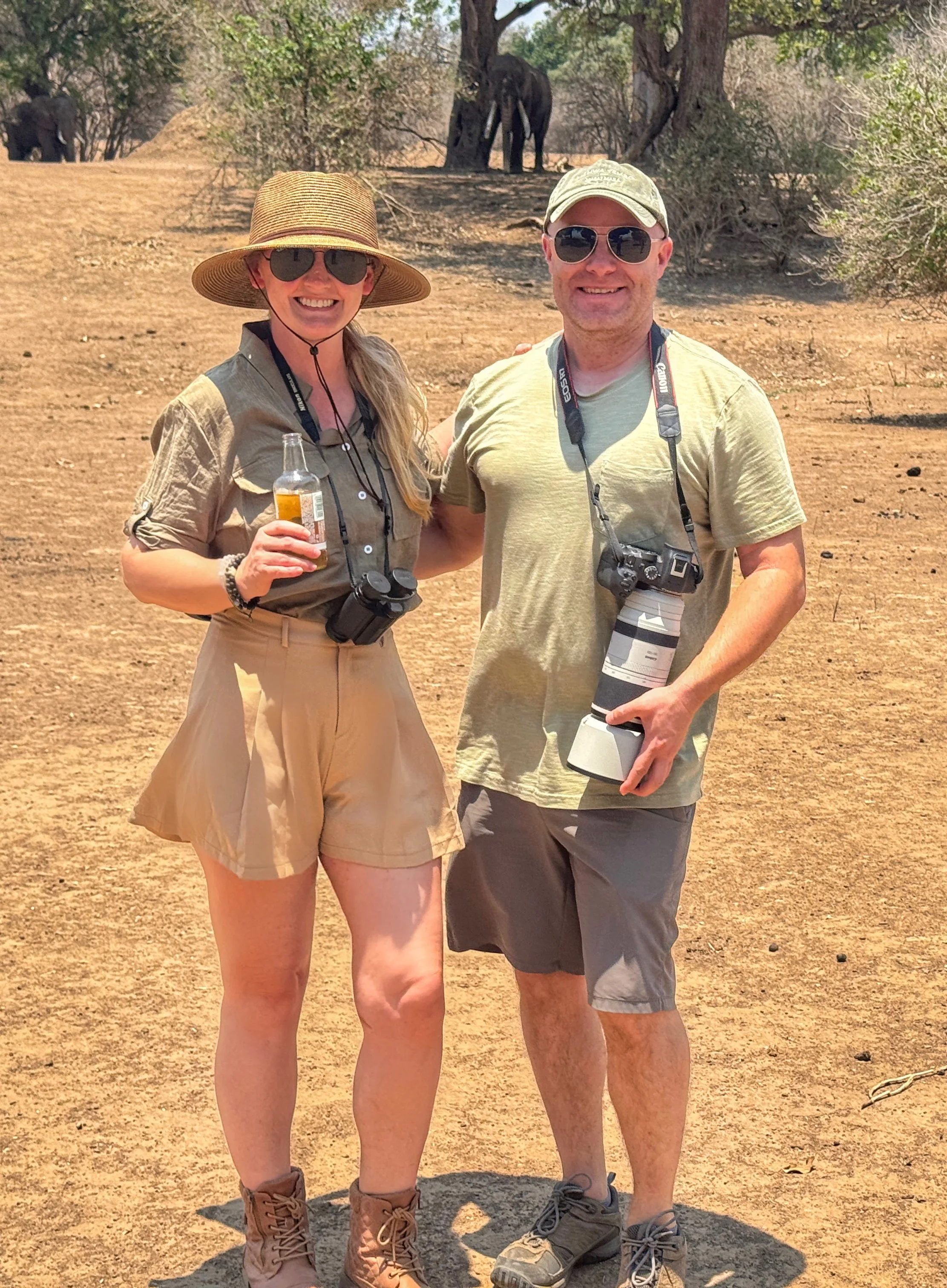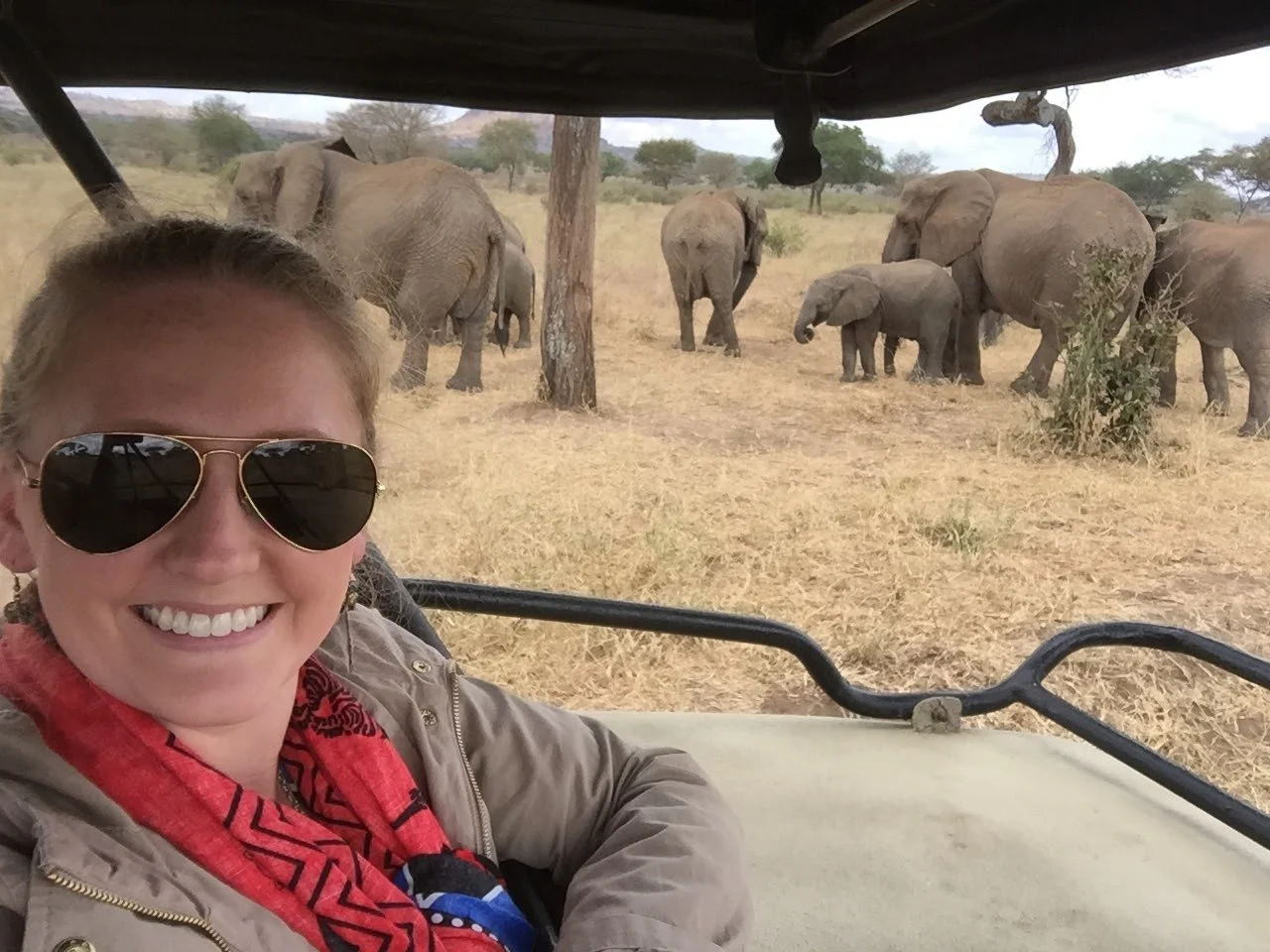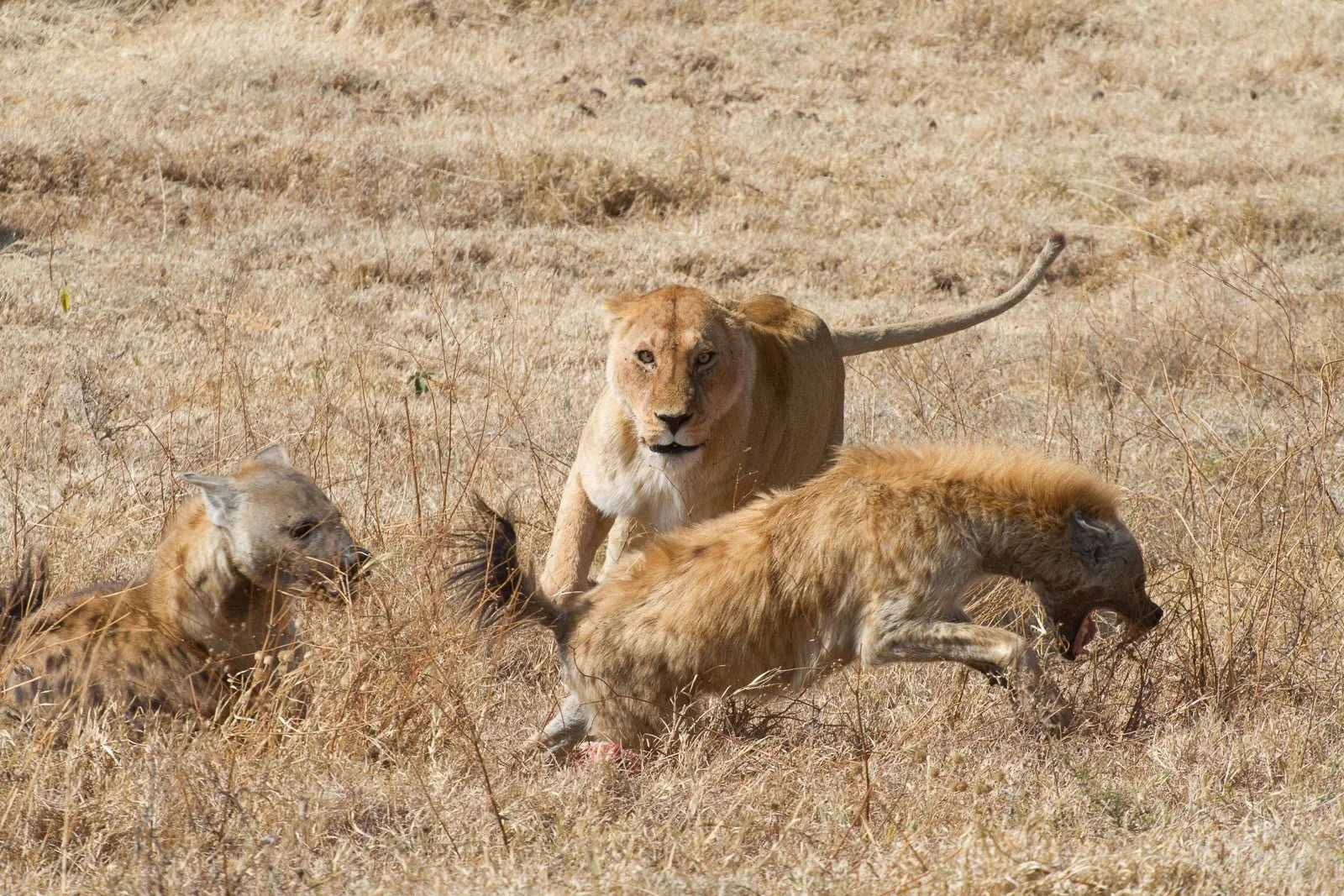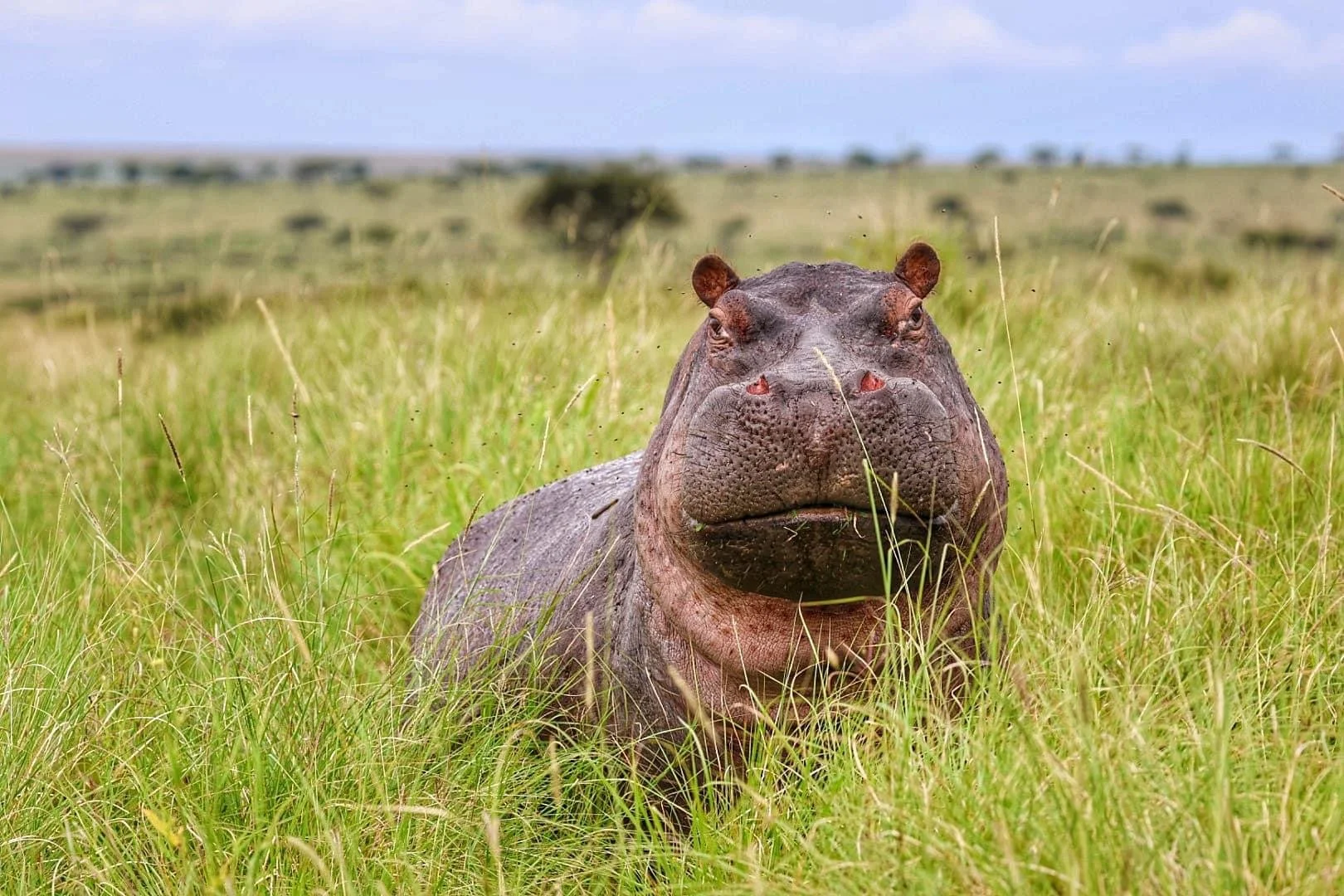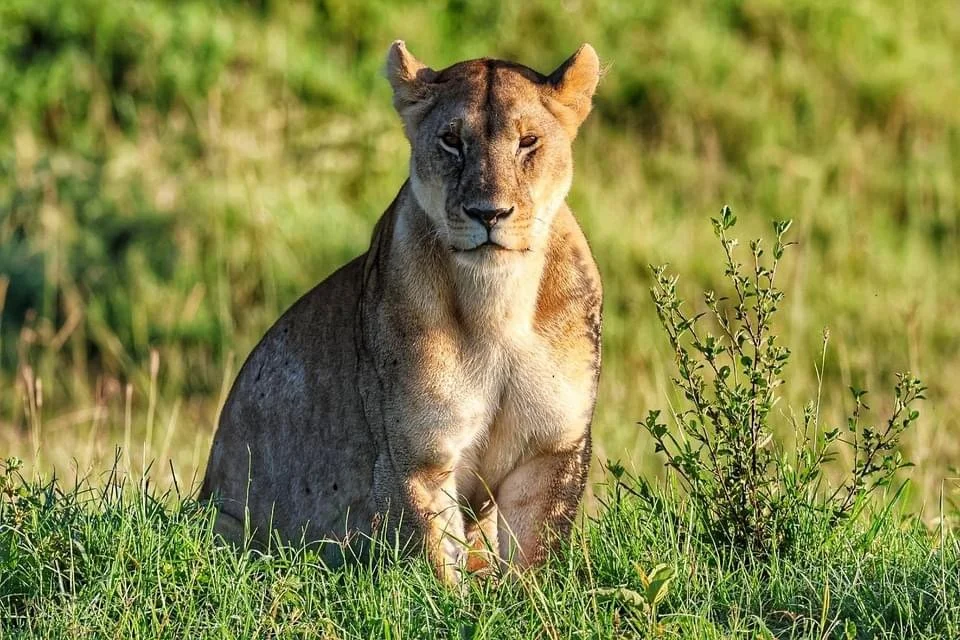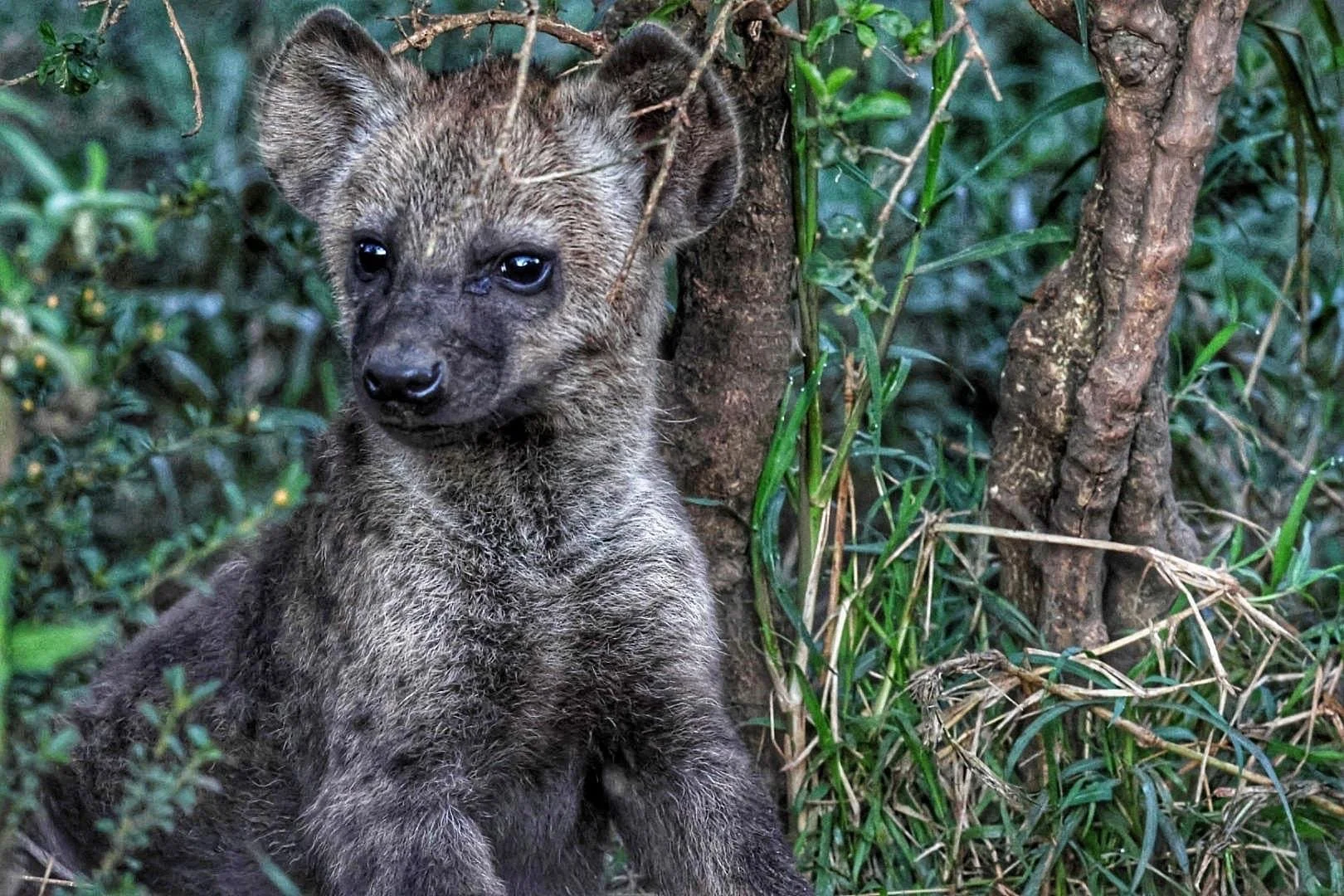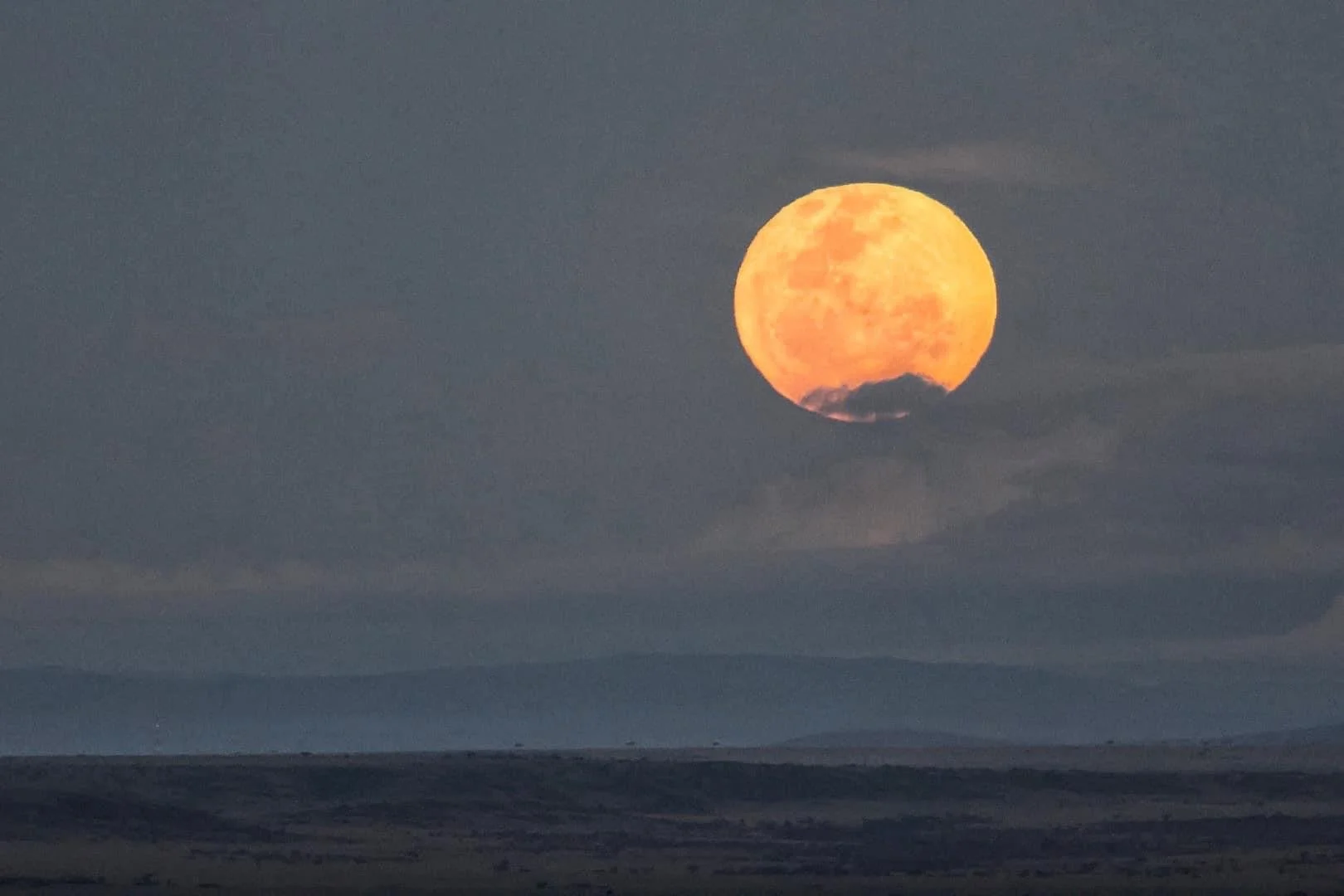Going on a Safari Guidebook
Lately, at least once a week I’m asked for advice on how to plan a safari vacation. I get it - it’s insanely overwhelming when you’re first starting to do research. I remember beginning to plan ours back in 2015 and kept running into the same few travel agents who boasted to give me a “once in a lifetime” trip. The problem was that I didn’t want that. I knew I would be back many, many times and therefore my budget wasn’t in line with a 70 year old person spending their hard-earned dollars to the max.
So to helpful my fellow travelers out, I’ve put together my suggestions & thoughts on the places we have been in Africa.
When planning for a safari, there are three questions you should ask yourself first and foremost:
1 . What am I MOST excited to see? (specific animals are key to this question)
2. How long do I want to spend on the actual safari portion of my trip?
3. How much am I willing to spend? (set a budget and stick to it!)
Your answers to those three questions can fairly easily be met with a park on the African continent. If it’s elephants you want to see more than anything else, prioritize the concessions & conservancies working to keep elephant populations healthy and the flora/fauna can support heavy elephant populations. If you are desperate to see leopards, you’ll want a location that specializes in seeking them out vs trying to hunt for them in a million acre park where only 4 exist. Or maybe you only have one week of vacation and need to hit your safari the second you land since time is precious. No matter what, I can assure you there’s a park for every dream.
With all of that said, I’ve put together a list of the places we’ve been and what I would recommend based on your preferences. Obviously these are personal to my experiences but having been on 100 or so game drives by now, I feel comfortable recommending to new travelers to the African continent.
Without further ado….
Where We’ve Been
Best Overall Park & Best for first timers
This one is fairly easy for us….Masai Mara National Park. If you’re going to do a safari and want to hit up ONE location, this one simply cannot be beat. The Mara is the Kenya portion of the Serengeti and boasts the richest game we’ve seen to date. The big 5 are all represented here (Elephant, Lion, Rhino, Leopard, Buffalo) and the density of animals is astonishing compared to other parks. Most other places you are searching for game without seeing anything in the process but in the Mara, you’re usually looking through zebras, impalas, elephants, etc. to find what you’re looking for.
The Mara has recently received quite a bit of backlash from locals because it is one of the most expensive places to visit in the whole of Africa. There are over 200 lodges in the small span of land and often times you’re one of many vehicles on a kill or something unique. Proceed with caution. Find a lodge that gives back to the community and focuses on the animal’s wellbeing and you will have an amazing time. Just make sure to tip your guides and the staff accordingly. Very few Kenyans have actually been to the Mara because it has become so expensive so anything you can do to uplift families, absolutely do it.
First time safari lodge recommendation: &Beyond Kichwa Tembo
Best Budget-Friendly Park
Safaris are EXPENSIVE with the average cost per person, per day hovering around $800. That doesn’t mean you need to cash in your child’s nest egg to do it! Our vote for the most budget-friendly location is Kruger National Park. The ability to self-drive, camp, and self-cater make this a steal whereas $75-100 a day for a family of 4 is absolutely doable. You can fly into Skukuza, within the park boundaries, and even rent a car from there. They also have a few shops to stock up on food or you can visit one of the restaurants within Skukuza.
The first time we went, I was convinced we wouldn’t see anything because we weren’t with a guide. Fast forward 8 hours later and I had spotted the big 5 completely on my own. Most of the roads are paved in Kruger and the dirt roads are easily drive-able in a compact car. Just remember to keep your windows rolled up near animals and do NOT chase or get close to one with your car. Google “Kruger Distasters” to see why.
Where to stay: Kruger Gate Hotel for mid-range, camping for budget, or Kruger Shalati if you want to spend some $. Shalati is a converted train on a bridge overlooking the river with exceptional reviews and right in the action of it all.
Wildest National Park
If you’re looking to get completely off the beaten path, and literally get beaten by rough corrugated roads, then Mana Pools National Park is for you. This can be self-driven with multiple campsites available to sleep near the Zambezi river. I wouldn’t recommend tent camping here and instead opt for a rooftop tent or small RV. Why? Lions are everywhere in this park and love to walk around the camps at night seeking an easy meal in someone’s food cache.
I do NOT recommend this park for first time safari-goers. The game isn’t nearly as dense and the landscape isn’t as vast or open as other parks making it quite difficult to spot animals. However, it is one of the only national parks where walking safaris as standard and the animals aren’t bothered by people on foot. If you’ve been on a few safaris by now, then I would highly recommend this one for it’s uniqueness.
Where to Stay: If you want to be completely isolated with a watering hole with ultimate tranquility & peace - Kamakara Safaris, Nyamawani Pan Camp. If you want to be in the action, camping along the Zambezi at Nyamepi Camp.
Most Photogenic Park
Without a doubt, Chobe National Park is an absolutely gorgeous place. Half of the safaris are done via boat and when you’re not in the water, the animals are swimming through it, walking towards it, or drinking at their leisure. The game here is also dense and because the water source is so vast, the animals can spread out without fighting over who’s turn it is to drink. (common in the dry season)
Where to stay: Chobe Game Lodge, pioneers of the electric safari vehicle (the first in all of Africa!) & the only permanent property inside the park. Pro-tip: go during Green season and slash the standard rate in half!
Best for the African Elephant
While Chobe has the award for highest density of elephants in Africa, our pic for the best up-close-and-personal-with-elephants goes to Tarangire National Park. Located southeast of the Serengeti, we found the elephants here to be so vast, that we often were sitting for a while waiting for them to cross the road or move along. We never approached a single elephant but they definitely approached us and surrounded our vehicle multiple times. We never felt unsafe as our guide was hyper-aware of their behavior and got us away as soon as it was safe to do so. (meaning no elephants were scared or honked away)
Where to stay: We stayed at Balloon Camp Tarangire (now Elephant Rock Luxury Camp) and can recommend if you plan to stay a few nights. We only had one night and arrived after sunset so we don’t have a ton to report on.
Best for Leopards
Leopards are one of the most elusive animals to spot on safari as they are experts at hiding. Often tucked away high in a tree, we’ve likely driven right under a few and never realized it along our safari journeys. With that said, you can stack the deck HEAVILY in your favor by going to Sabi Sands Private Game Reserve. Along the western border of Kruger, Sabi Sands is known for it’s high density of leopards and we were not disappointed! Because this is a private game reserve and not a national park, the guides can drive off-road into the bush to get closer to the action. (at one point, we were less than 10ft from a pride of lions feasting on a zebra carcass) This area is a little more difficult to spot other game but the trees, river beds, and decent amount of prey make it a leopard hot spot.
Where to stay: Arathusa Lodge. This used to be a hidden gem and around $600/night total for 2 people but it looks as though word got out and they have increased their pricing. I definitely recommend still as it’s along a watering hole, the staff was Nat-Geo worthy (a few were featured on a safari show back in 2016), and you’ll likely spot game before you even leave the grounds.
Best for Giving Back to the Community & Best for Private Game Viewing
Hands down, this award goes to Mara Naboisho Conservancy. A concession off of Masai Mara, this was our very first set of game drives and we were instantly hooked. The conservancy is a beautiful example of community and tourism working hand-in-hand with the entire area leased from 500 Masai landowners. This provides income & stability to the local community, allowing villages to thrive and creating a relationship with the animals to keep them protected. The Masai are incredible people with rich history that should be protected. This conservancy should serve as a blueprint for how all of Africa’s wildlife corridors should operate; keeping ownership with the ones who were there first and leasing to create an economy that everyone is happy with. It’s also worth noting that tourism is limited here, since the Masai people are keen to protect the animals as much as possible, so you’ll likely not see a single other vehicle on your time here.
Where to stay: Eagle View or Asilia Naboisho. We stayed at Eagle View and absolutely loved it but had Asilia in our sights for last May due to their recent renovation. Both are exceptional.
Most Unique Park & Unexpected Sightings
Driving into Ngorongoro Crater not only takes your breath away, but you realize just how big some volcanos could actually be! This park is super unique with the geography giving animals almost a “trapped” feel. As a result, behaviors here are more unexpected with some animals simply not following their normal hunting patterns. It can be brutal at times, especially during dry season, when the animals are in search of any water or food, and thus become aggressive. Please only visit this park if you have a trusted and ethical guide as it can lead to some dangerous encounters if not. Curtis’s most viral video (with well over 1M views) comes from here - a wildebeest being eaten completely alive for over 5 minutes by a hyena. (Click here to watch but NOTE, it is graphic)
Where to stay: Ngorongoro Farm House. Loved our time here, the staff was very friendly, and many were Masai who were more than happy to share their traditions and customs.
Best for Bird Life
If you’re into birding, Lake Manyara was chock full of birds and when in season, thousands of flamingos can be seen here. It’s also known for its tree-climbing lions, and while we didn’t see any on our day there, we’ve heard really great stories about people seeing them.
Where to stay: I would stay near Ngorongoro and do day trips to this park. It’s small enough to cover in a few game drives and the lodges around the area are best outside of the park.
When to Visit?
There’s always something to see and experience on safari any time of the year so when you go will again be based on what you want to see and how much you want to spend.
For the Mara & Serengeti, the great migration pulls in the majority of tourists as they watch millions of wildebeest migrate south and north. This migration is one of the greatest wonders in the world as it’s a prime opportunity to not only see the richest density of game on the planet, but you’ll watch predators fill their bellies, prey run for their lives, and all the subspecies that benefit from both sides.
Peak season is typically in winter (our summer) because the rains haven’t been seen for months and all the animals congregate around the dwindling watering holes. Shoulder season is when you have a potential for some rain and less watering hole density, and green season is peak rainy season with lush greenery everywhere, giving animals plenty to drink.
We’ve been lucky enough to experience all 3 seasons and each are special in their own way. If you’re short on time, peak season is likely the way to go so you have the greatest chance to see what you hope to see within your timeframe. Shoulder season is a good way to save a few $ if you have your heart set on a location or lodge. However, after visiting the northern Mara last May during the height of green season, it might just be my new favorite. It’s harder to spot game, especially when you have cats laying down in the tall grasses, but the lushness of the land is hard to top. We found prices at most lodges to be as much as 75% off of peak rates, usually with flight deals thrown in too, so it’s another way to save some money on a bucket list experience.
Ok, this is all great but where on earth do I start?
Start with the three questions I laid out in the beginning. That gives you some parameters to work with. From there, we use Safari Bookings to help narrow down lodges, parks, and agencies who can work within our budget. You’ll quickly discover quite a bit of overlap in parks & lodges within certain price points and get a feel of what’s doable in your timeframe. If that’s all still overwhelming, you can seek out a few expert travel agencies like Audley, Abercrombie & Kent, or Lion World Travel. Just keep in mind hidden costs with agencies like this as most will include airport transfers vs taxi/uber rides, and things of that nature, that can add up quickly. (ex: we were quoted over $300 for a private transfer from one airport to another, when a taxi/Uber was $5. As experienced travelers, we don’t need someone with a sign right after baggage claim to show us how to get to an airport we can see from where we were standing)
Dream a Little Dream….Where do We Want to Go?
We’ve hit most of the highlights in our safari journeys so where else could we possibly want to go? A million other places! Below is a list of parks we have our eyes on for future safaris:
Zakouma National Park in Chad - Exceptional elephant repopulation happening in this park with very few tourists.
Namibia - we plan to self-drive most of the country over the course of a few months. A few weeks simply won’t be enough!
Last Word Kitara & Madikwe in South Africa - we have this booked for next September and again in April of 2027. Stay tuned for a blog post about those properties as it’s our first, and one of the only in the world, safari done totally on points.
Angola - very wild, very rustic, and home to a gorilla population very few humans have seen.
Serengeti - shockingly enough, we haven’t technically been in the Serengeti yet on the Tanzania side. We’d love to check out some of the areas known for cheetahs as we’ve only seen a few to date.
Limpopo in Mozambique - the Mozambican side of Kruger, it’s relatively new and gives a wild & rugged adventure, similar to Mana Pools.
Gonarezhou in Zimbabwe - we just learned about this park while in Mana Pools and it looks stunning, with healthy elephant populations & minimal tourists.
Keep Dreaming….if money were no object
Of course I have a few places that I would absolutely LOVE to visit if our budget was non-existent. We have had such amazing stays at lodges that it’s hard to comprehend how much better it could be. A few properties stay on my dream list for their commitment to protecting the wildlife, gorgeous looking properties, and community initiatives.
Singita - all of them. This brand constantly tops the charts of best lodges in Africa and I don’t think I’ve read a bad review ever. At $3k-4k/night though, it stays squarely on the dream list. They are conservationists, wildlife enthusiasts, and incorporate the community as much as possible.
Londolozi - this screams quiet luxury and boasts a whopping 3 Michelin Keys, World Traveler Awards Winner in 2017, along with countless others. It’s a private game reserve owned by one family who then run a series of lodges across the land. This means you are never going to see another camp’s vehicles, you’ll have your own safari vehicle, and you’ll have around $5k-6k less in your wallet for every night you stay.
if you’re still reading this, then you are definitely ready to start your safari research! Hopefully this guide can help you narrow down your favorite parks and get you a step closer to booking the flight.

